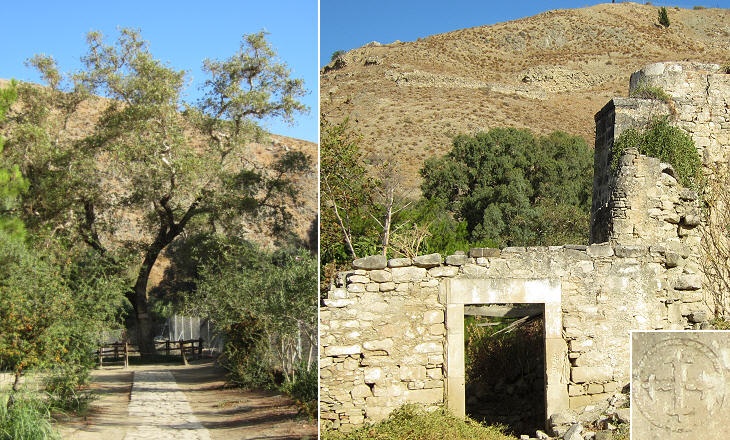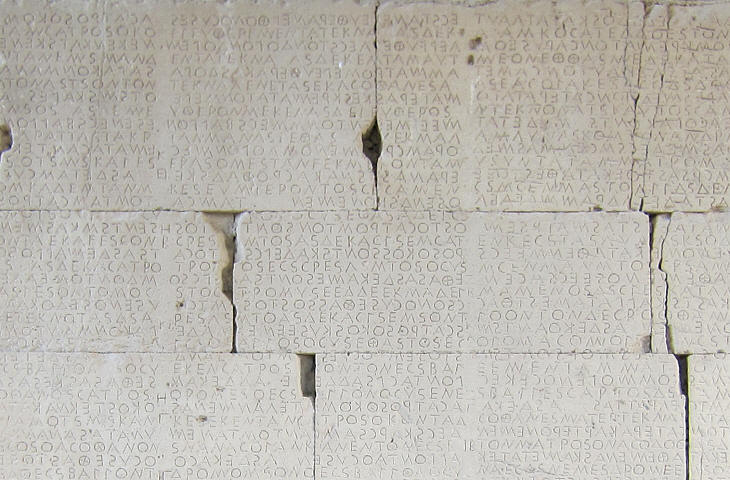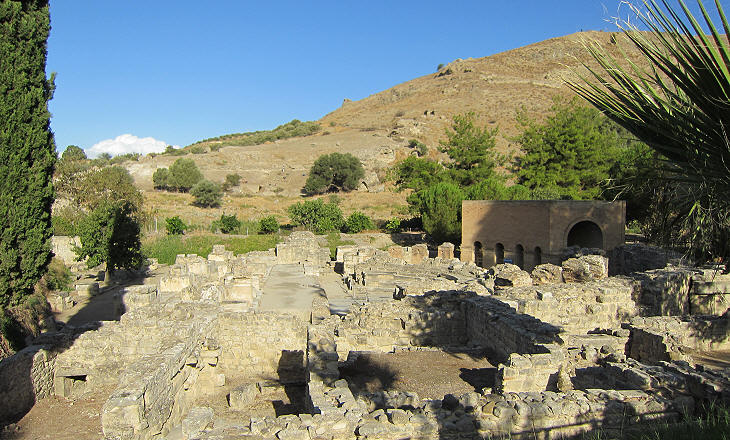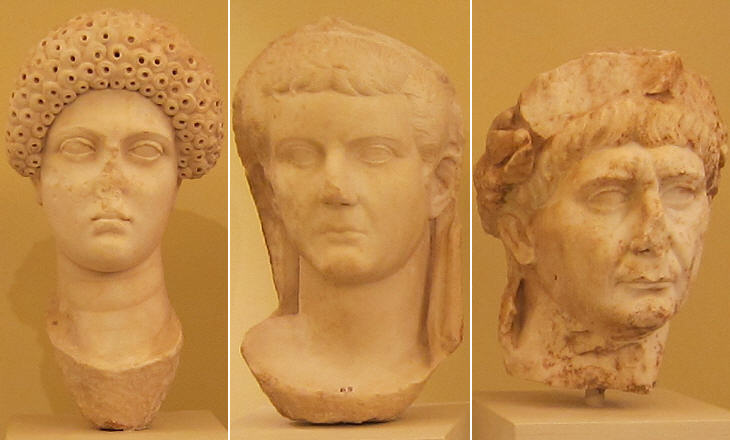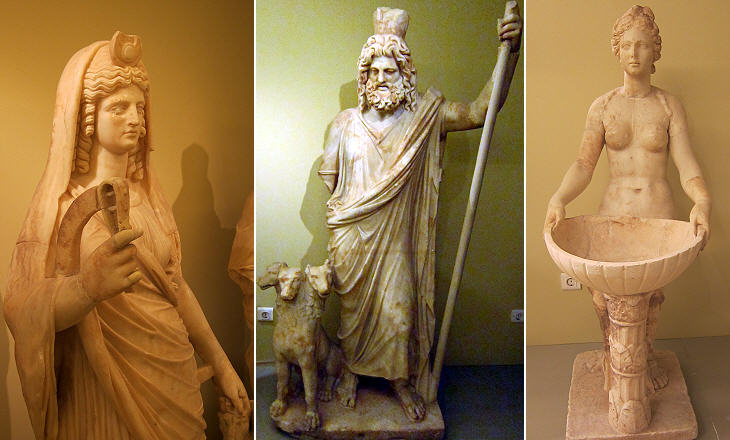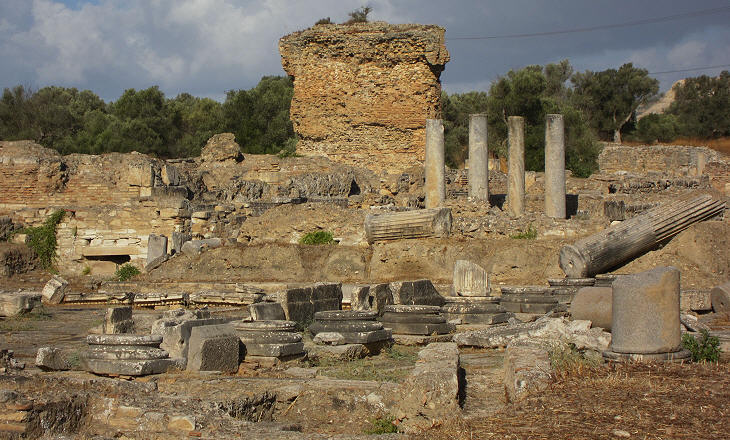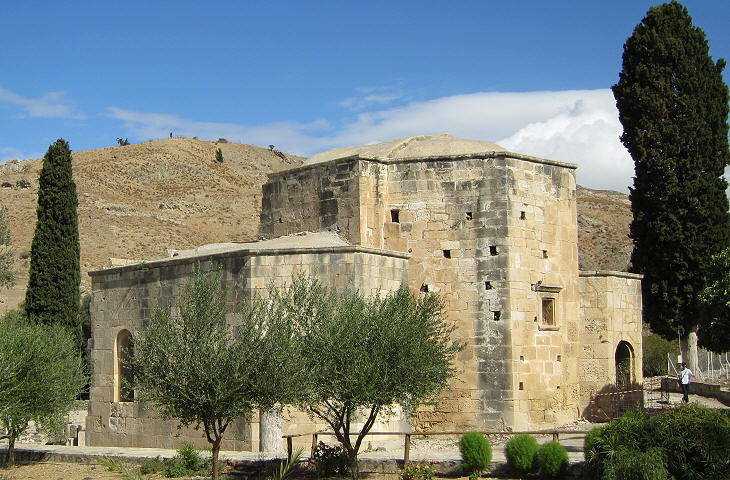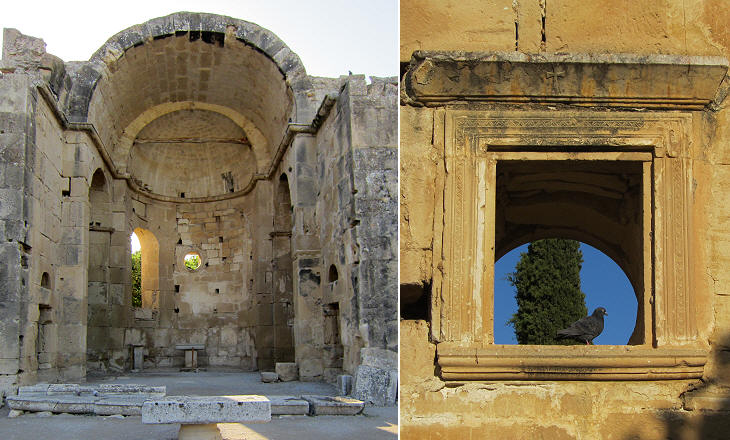  What's New! Detailed Sitemap All images © by Roberto Piperno, owner of the domain. Write to romapip@quipo.it. Text edited by Rosamie Moore. Page added in December 2011. |
  - Gortyn - Gortyn(Painting showing a bull-leaping exercise found at Knossos, now at the Archaeological Museum of Iraklion) Of Knossus, Lyctus, and Gortyna's bands; And those who dwell where Rhytion's domes arise, Or white Lycastus glitters to the skies, Or where by Phaestus silver Jardan runs; Crete's hundred cities pour forth all her sons. These march'd, Idomeneus, beneath thy care, And Merion, dreadful as the god of war. Homer - The Iliad - Book II - Translation by Alexander Pope Gortyn with Knossos and Phaistos was mentioned by Homer among the Cretan towns which sent ships to the War of Troy.
Gortyn is located in the Mesara plain in the southern part of Crete; according to the Greek myth Zeus, disguised as a white bull, abducted Europa, a young beautiful girl, from the shores of Phoenicia and he carried her to a plane tree near Gortyn. Here the god made an attempt to seize her, but Europa resisted and Zeus had to turn himself into an eagle to finally gain her acquiescence. The myth has had various interpretations; the most widely accepted one believes it is a metaphor for the invasion of Crete by Greek tribes from the continent. Ancient Gortyn was located on a hill, but its acropolis was turned into a fortress by the Byzantines and it was eventually destroyed by the Arabs in 823.
Gortyn became the main city of southern Crete at the expense of Phaistos and in 220 BC it extended its power over the northern part of the island by forcing Knossos to acknowledge its supremacy. Archaeologists have found a very long inscription in the early Greek language which contains a code of laws dealing with several matters varying from family rights to ownership of slaves and legal distinctions between social classes. The text (dated Vth century BC) is a rare example of boustrophedon writing (letters written from left to right and from right to left in alternate lines). The code was carved on the pillars of a bouleterion, a public meeting place; the stones were eventually reutilized for the construction of an odeon in by the Romans.
During the IInd century BC the Romans acquired a growing influence in Greek matters; they initially acted as protectors of the Greeks against the Macedonian kings, but eventually their control over the country became more direct. The Aegean islands however retained some form of autonomous government. In 85 BC Silla defeated Mithridates VI, King of Pontus, a region of Asia Minor on the Black Sea. Trade routes between Rome and its Asian territories were not safe because of the presence of pirates who attacked Roman ships or those of their allies in the region. The pirates often used coves on Crete as their bases and sold their loot in Cretan towns. The Roman Senate ordered the Cretan towns to stop assisting the pirates; at their refusal in 68 BC a Roman army, led by Quintus Caecilius Metellus, landed on the island which was entirely conquered in the next two years. The pirates were eventually eradicated from their bases on the Asian coast by Pompey.
Gortyn sided with the Romans and it was soon rewarded by them. In 96 BC Ptolemy Apion, the last king of Cyrene, a Greek town in the eastern part of today's Libya, bequeathed his territories to the Roman Republic. In 20 BC Creta et Cyrenaica, a new province of the Roman Empire, was created and Gortyn was made its capital. This meant it was the residence of the governor and of the administration of the province. The lower town at the foot of the acropolis was expanded into the Mesara plain. Today the ruins of the imposing buildings of this new part of the town are spread over an area of several square miles and are surrounded by olive trees.
It is customary in most of today's countries to display an official portrait of the king/queen/president in public buildings; the same occurred in the Roman Empire, although statues were used instead of photographs. The portraits of the new emperors were very true to life and not too flattering. Archaeologists have found several statues of the emperors at Gortyn because of its role as the provincial capital.
Gortyn was part of the Greek world and it had a temple dedicated to Apollo and more exactly to Apollo Pytius, the oracular god who was worshipped at Delphi. The temple was very old (VIIth century BC), but it was renovated and modified in the IInd century AD; games and events in honour of Apollo were held in a small theatre on the back of the temple.
Because of its role as capital of a province which included territories on the southern shore of the Mediterranean Sea, Gortyn had a cosmopolitan population and temples were dedicated to Egyptian deities such as Isis. Archaeologists found a statue representing Hades, the Greek god of the Underworld, or Serapis, an Egyptian god who combined attributes of Osiris and of Hades. The Greeks feared to even name the latter and used metaphors instead; the Egyptians had a much more relaxed approach to death as they believed in some form of resurrection. The statue shows Hades/Serapis with Cerberus and the long pole by which the god pushed the souls of the dead into the Underworld. Similar to most Roman towns, Gortyn was supplied water by an aqueduct and it had some monumental fountains.
The importance of Gortyn declined after 297 AD when Emperor Diocletian reorganized the administrative division of the Roman Empire into twelve dioceses comprising more than a hundred provinces. Cyrenaica and Crete were assigned to different dioceses and Gortyn lost the role it had for more than 300 years. In the VIIth century the wealth of Gortyn was impacted by the Arab invasion of the countries on the eastern and southern coasts of the Mediterranean Sea; well established trade routes were interrupted and Crete was subject to Arab raids. Eventually in the 820s the island was conquered by Muslims from Spain and an emirate was established; Gortyn was razed to the ground and Chandax (Venetian Candia, today's Iraklion), a new capital of the island was built near ancient Knossos.
From Crete the Arabs launched raids on many ports and islands of the Aegean Sea; in 960 a Byzantine army led by Nikephoros Phocas landed near Chandax and after a long siege seized it and eventually conquered the whole island. The Byzantines did not attempt to rebuild Gortyn, but they did rebuild a large VIth century church dedicated to St. Titus, a companion of St. Paul who organized the first church in Crete and was the first bishop of Gortyn.
The image in the background of this page shows a very old clay statue of Athena found at Gortyn and now at the Archaeological Museum of Iraklion. Go to: Knossos or Phaistos Clickable Map of the Ionian and Aegean Seas with links to other locations covered in this website (opens in a separate window)  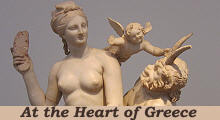 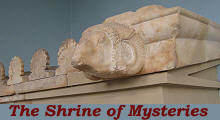 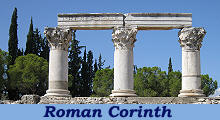
|
